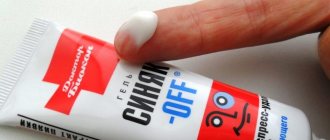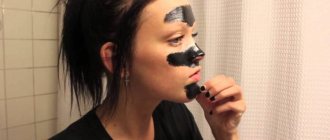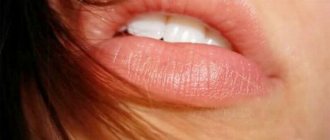A beautiful white fur coat looks great in winter in tandem with sparkling snow. Whether it’s a fluffy snow-white rabbit collar or an elegant silver mink sheepskin coat, they look equally at home in the cold winter. But sooner or later, unfortunately, the fur begins to turn yellow. It loses its impeccable appearance, acquiring the shade of a worn-out item. This, of course, greatly upsets the owners of the fur product.
White fur coat
Some ladies, at the sight of yellowed fur, begin to panic and immediately run to the dry cleaner for help. But you can bleach yellowed fur at home. In addition, the cost of dry cleaning services for fur products is not always justified, and it is worth it to take your product there.
Causes of yellowing
When purchasing products made from natural fur, you must take into account the fact that over time it will definitely begin to acquire a yellowish tint. This happens because the natural color pigment of the villi fades under the influence of ultraviolet radiation. The same effect happens to people's hair in the summer. Also, the fibers can burn out from the bright light of the lamps. If the finished product has been hanging for a long time in a store with daylight, or at home on a hanger in a brightly lit room, then this process is inevitable.
Boa with yellowed fur
But even if you carefully pack your mink collar coat or white rabbit fur coat and hide it deep in the closet, it will simply prolong its original appearance a little.
How can you wash faux fur without damaging the product?
How to bleach faux fur if dry cleaning does not bring the desired result? Almost all products made from synthetic materials can be wet processed. The main thing is to do everything correctly and as carefully as possible.
Almost all products made from synthetic materials can be wet processed
In order to get rid of various dirt, stains and bleach faux fur, you will need the following cleaning tools and products:
- a small but roomy basin or bowl;
- shower gel or shampoo (it is not recommended to use liquid washing powder, as it has an aggressive effect on fur products);
- soft sponge or soft brush;
- paper napkins or towels;
- light terry towel.
The wet washing process will consist of several stages. First of all, it is necessary to place the fur product in such a way as to provide access to all places and smooth out folds. For convenience, you can hang the item on hangers. In a small basin with lukewarm water, you need to dilute a small amount of gel or shampoo. Shake the mixture until you get a lot of soap foam. Using a soft sponge or brush, treat the entire surface of the product, trying to work exclusively with foam, using a minimum amount of water.
Upon completion of the procedure, use dry wipes or paper towels to remove excess moisture from the surface of the fur. You can also use a terry towel, which can absorb the maximum amount of moisture. Next, gently smooth the pile with your hands in the desired direction and leave to dry in a warm room, avoiding proximity to heating devices and radiators. An important point is that you can comb the artificial pile only when it is completely dry. A regular comb with blunt teeth or a special brush will do for this.
On a note! By correctly performing all the steps, you can whiten and refresh the fur, as well as get rid of contaminants such as various stains and dust.
Purification process
Considering the degree of yellowing, you can improve the appearance of the fur product at home.
Attention! Choose the method that suits you best and test it on a small area of fur on the least visible side.
Cleaning a mouton coat
Once you are convinced of its feasibility, you can begin bleaching the entire product.
- Cleaning from dirt and dust: sprinkle the fur fibers with any natural adsorbent. This could be starch, flour or white chalk. Rub carefully with your hands so that the adsorbent absorbs all the dust and dirt. If the yellowing is not associated with a change in pigment, then this method will help restore the purity of even mink fur.
- Fur that is very yellowed from dirt can be bleached using animal shampoo. Pour it into a spray bottle and dilute it slightly with water to remove the thickness. Then sprinkle potato starch on your collar or fur coat and spray the resulting detergent onto the lint. Gently spread with your hand evenly over the entire area. Let dry.
Note! After both of the above methods, you need to shake the product thoroughly and then clean it with a clothes brush.
What is a mouton, how do you get such fur?
Mouton is the so-called refined sheepskin.
The word itself, translated from French, means nothing more than “domestic sheep.” Fur is obtained by breeding animals of a special breed, which is called Mouton. Entire herds of these noble ungulates are raised in Australia and the islands of New Zealand so that their high-quality skins can then serve as raw material for the production of fur products around the world. Today it is not possible to determine who came up with the technology for making mouton. According to one version, these were German tanners, according to another - French. One way or another, the production scheme for mouton products has not changed for years. The process includes several stages:
- Fleshment. The skin is completely cleaned of animal remains.
- Stalling. Sheepskin is “crushed” to make it soft. Nowadays, a vibrating drum is used to carry out this procedure.
- Stretching. The smoothed skin is placed on a special table and dried. High-quality sheep leather does not lose strength and elasticity, but increases in size. This is good, since large skins can be used to make a fur product with fewer seams.
- Treatment with formaldehyde. This step is necessary to give the sheepskin the moisture resistance necessary in the Russian winter. Foreign technologists often skip this stage of manufacturing.
- Cutting, smoothing, coloring. Final procedures aimed at giving sheep fur a noble and aesthetic appearance.
https://www.youtube.com/watch?v=zNzTMARaGnQ
Thus, the modern version of mouton is a beautiful and, most importantly, comfortable to wear, lightweight, but incredibly warm material. However, in order for a quality product to please the owner for many years and fully recoup its cost, it is important to be able to properly care for the item.
There are a number of tricks to extend the life of fur products while maintaining their original luxurious appearance. Most of these secrets concern the proper storage of things:
- The product must not be deformed! Fur coats and sheepskin coats should be stored in the closet on wide wooden hangers so that the fur does not wrinkle. For the same purpose, the hat can be placed in a separate fabric bag or box (the main thing is not to put anything on top!).
- In the summer, it is better to remove the fur item away from the sun's rays. A closed cabinet located in a cool, shaded place is ideal for this purpose. The main thing is to provide air circulation to things so that they do not become saturated with a musty smell.
- Moth is the main enemy of fur products! That is why it is better to “stuff” the closet where fur coats and hats are stored with products against these insects.
How to quickly and effectively clean a thing from stains and dirt at home, while getting rid of yellowness if the fur is light, and returning it to its original shine? With prolonged use of a light-colored mouton product, the white fur inevitably turns yellow (especially in the area of the armpits and collar, if the owner likes to use deodorants, perfumes and alcohol-based eau de toilette). The following will help return things to their original appearance:
- Hydrogen peroxide. The product is applied directly to the fur using a sprayer, after which the pile is carefully combed.
- Gasoline plus starch. For 100 ml of flammable liquid take 1 tablespoon of powder. The resulting gruel is rubbed on the front side of the product, and then the fur is “combed out” with a clothes brush.
- Shampoo for short-haired cats. A small amount of cosmetic product is whipped to a foam, which, in turn, is applied to the pile with a clothes brush. After treatment, wipe the item dry with a towel and comb it again. This time the brush is taken clean.
- Semolina. Before the procedure, the cereal is poured with water so that the grains swell. The resulting substance is distributed over the fur and left until completely dry (that is, for 30–40 minutes). After this, all that remains is to clean the item using a vacuum cleaner with an upholstery attachment.
Important! The methods described above are not suitable for cleaning dark fur. Many of the listed products (in particular, semolina and peroxide) leave a whitish coating on the pile, noticeable against a black, gray or brown background.
If you store your mouton fur coat incorrectly, you may one day take it out of the closet and find that the fur in the area of the sleeves and collar has turned green. Why does this happen?
We suggest you read How to get rid of the smell of old age in an apartment: how to remove it using improvised means at home
As a rule, green fur is the result of exposure of the product to direct sunlight. Already familiar methods of dealing with yellowness will help you get rid of the unpleasant shade. If none of these work, you can try the following method:
- A small amount of hydrogen peroxide is diluted in clean water in a ratio of 1 to 1.
- The resulting liquid is applied to a cotton pad. Using it as a tool, they process all problem areas of the item (sleeves, collar, etc.), where the fur turns green.
- The product is allowed to dry for 20–30 minutes, after which the remaining liquid is removed from the pile using a clothes brush.
Since the possibility of washing fur products is absolutely excluded, ordinary, ordinary stains can also become a problem for the owner. How to deal with such pollution? There are several effective ways:
- Ammonia and salt. For 1 tsp. liquids take 4 tbsp. l. salt. The resulting slurry is diluted with water (500 ml). Apply the product directly to the stain, thoroughly blotting the stain (for convenience, you can use a dishwashing sponge). Leave the item in this form for 10–15 minutes, after which the excess product is removed with a brush.
- Rubbing alcohol, table vinegar and water. All ingredients are mixed in equal proportions. The resulting solution is applied to the stain using a cotton swab. After cleaning, moisten the treated areas with plain clean water (you can use a sponge again) and leave the item alone until it dries completely.
- Washing powder. Whisk a small amount of the product with water until a thick foam is obtained, which is applied to the stain. After some time, remove it with a cloth soaked in water, then allow the product to dry naturally. For this recipe, you can use liquid or laundry soap and even hair shampoo instead of washing powder.
The methods described above are good when you need to clean a thing from ordinary dirt, but what to do if we are talking about greasy, greasy stains? To get rid of greasy stains and greasy fur, it is customary to use the dry cleaning method. Suitable for this method:
- corn starch;
- semolina;
- bran or sawdust.
The selected product (in dry form) is poured directly onto the problem area of the product so that it absorbs all the fat. After this, the owner can only carefully clean the item with a vacuum cleaner.
How to bleach yellowed fur with peroxide
The use of hydrogen peroxide or ammonia is understandable. Peroxide has wonderful whitening properties. It is often used at home to whiten any yellowed items. Important! Keep in mind that it is very caustic, and if your gray or blue mink fur has turned yellow, then be extremely careful. Since the natural pigment can become significantly lighter.
Hydrogen peroxide 3%
To bleach yellowed fur, you will need:
- hydrogen peroxide solution;
- a new sponge or cotton swab;
- ammonia.
Ammonia
Dilute 1 teaspoon of peroxide in 150-200 ml of water, add a few drops of ammonia. Dampen a foam sponge and gently rub over the yellowed fibers. It is important not to touch or saturate the skin itself, but only the pile. You can occasionally treat white rabbit fur with this solution for prevention, just make it less concentrated.
How to bleach Arctic fox fur - 10 proven methods
I have a snow-white fur coat that is starting to take on a dirty tint. I'm not a fan of yellowed fur, so I immediately started looking for how to bleach it. I hasten to share the knowledge I have gained with you.
It is not at all necessary to take a fur item to the dry cleaner; available means will help bleach the fur. Causes of yellowing of fur
Before you figure out what to do and what to do with yellowed fur, I propose to consider the main reasons for damage to the product:
Photo Description Cause 1. High humidity .
If you get caught in the rain, there is a high risk that it will cause a yellowish tint to the fur.
If fur is growing on your fur coat, then you can blame it on excess moisture. Reason 2. Improper storage .
During the off-season, due to improper storage, a large amount of dust gets onto the fur product.
Its accumulation can lead to a change in shade. It is best to store such items in a special blue case or bag. Reason 3. Secretion of sweat glands .
Sebum is well absorbed into the villi of the product, affecting its quality. Methods for cleaning fur: 10 options Fur may turn yellow due to moisture, improper storage or sebum
Saving arctic fox fur from yellowing without expensive cleaning products is a real task. The cleaning method must be chosen depending on whether it is natural or artificial.
Cleaning natural fur: 7 recipes
It is not at all necessary to go to the dry cleaner if the fur has turned yellow. The price for such services increases every year, but the quality leaves much to be desired.
Useful means that can be found in almost every home will help you bleach natural pile:
Image Instructions for action Method 1. Wet cloth
Washing white fur is not a good idea. But without water procedures it will be difficult to remove dust:
- Wet a piece of white, clean cloth and wring it out thoroughly.
- Wrap the product with it.
- Walk over its entire surface with finger movements. The damp cloth will absorb all the dust and refresh the appearance of your fur coat.
Method 2. Potato starch
- Sprinkle the surface of the product with potato starch.
- Dilute a small amount of delicate washing powder in warm water. Pour the liquid into a spray bottle.
- Spray the product with the resulting composition.
- Wait for it to dry.
- Use a clothes brush to comb out any remaining starch and powder.
Short fur should be brushed against the growth of the pile, and long fur should be brushed in the direction of growth.
Method 3. Sawdust and alcohol
The following recipe will help to bleach the fur of the Arctic fox in places where it comes into contact with the skin.
- Soak sawdust from deciduous trees in alcohol and scatter over the surface of the fur coat.
- Rub them lightly with your hands, then add a new portion.
- Remove sawdust with a comb.
It is very important to take sawdust from deciduous trees; sawdust from coniferous trees may contain resins, which can cause the pile to simply stick together.
Method 4. Vinegar
9% vinegar will help bleach fur at home:
- Place the product on a horizontal surface.
- Soak a clean piece of white cloth in alcohol.
- Wipe the lint with it.
- Hang your fur coat on the balcony for airing.
Method 5. Hydrogen peroxide and talc
Using hydrogen peroxide, you can deal with even the most outdated yellow spots:
- Mix peroxide with body talcum powder until a paste forms.
- Apply the mixture to the surface of the item.
- Wait for the mixture to dry, then shake the product.
- Go over the pile with a dry, clean brush.
Method 6. Hydrogen peroxide and ammonia
You can also bleach villi using a combination of ammonia and hydrogen peroxide:
- In a glass of water, dilute a teaspoon of peroxide and alcohol.
- Soak a sponge in the solution, wring it out and walk over the fur.
- Hang the item to dry in the sun. Sunlight will only enhance the whitening properties of peroxide.
Method 7. Chalk powder
- Grind the chalk well into powder.
- Apply it to your fur coat or hat.
- Rub the powder into the lint with your hands.
- Shake the product and, if necessary, treat it with a dry brush.
Cleaning faux fur: 3 ways
Faux fur is less easy to clean than natural fur, but that doesn't mean you shouldn't even try:
Image Instructions Method 1. Lemon juice
- Dilute lemon juice in a liter of water.
- Soak a clothes brush in the resulting solution.
- Walk it along the path of the pile.
- Hang the product on a hanger and let it dry.
- Comb the fur coat with a comb.
Method 2. Glycerin
Glycerin will help whiten yellowed fur:
- Mix it with water in equal proportions.
- Apply the resulting composition to the surface of the product.
- Wait for it to dry and comb it. Glycerin will not only lighten the fur, but also make it softer.
Method 3: Liquid detergent
Faux fur can be washed with your own hands or in a washing machine using the “hand wash” mode. The water temperature should be no higher than 30 degrees, and only liquid detergents can be used in the process.
Bottom line
You learned that you can bleach natural and artificial arctic fox fur with your own hands. This will allow you to preserve the beautiful appearance of your favorite things for a long time. Even more useful tips are in the video in this article. And if you still have questions or want to share your own cleaning recipe, write in the comments.
Source
Useful tips
If you see that the fur has turned yellow and you don’t know how to bleach it, then first weigh the pros and cons. Read reviews from other people about using a particular method. Choose the whitening method that suits you best. Be sure to test it on an inconspicuous area of the product.
When you have a blue mink collar or sheepskin coat, use the optical action method. Dilute the blue in warm water and use a spray bottle to apply the solution to the fur. Let dry thoroughly. This tinting will hide traces of yellowing and add freshness and brightness to the color.
Try to clean and bleach contaminated outerwear in a timely manner. After the end of the cold season, immediately before putting it in the closet, carefully check the condition of the fur.
Leave your comment:
How to properly care for fur
All types of fur turn yellow, including artificial ones. This process cannot be stopped completely, but it can be slowed down. To do this, it is recommended to store the fur coat in a special refrigerator. Low temperatures slow down the aging process of wool. In the closet, the fur coat is stored in a dark or blue case.
Any contamination must be removed immediately using dry or wet methods. Under no circumstances should you dry your fur with a hairdryer or near a heating device. If the product has been exposed to rain, you should hang it on hangers in the room, and after drying, comb it with a fine-toothed comb.
A specialist will tell you how to properly care for your fur coat in order to maintain its chic appearance longer.
To clean fur from yellowness, bleaching powders or liquids are applied to the surface. You should act carefully: do not rub the fur too much or wet it excessively. It is unacceptable to use aggressive substances that can damage the structure of the coat.










